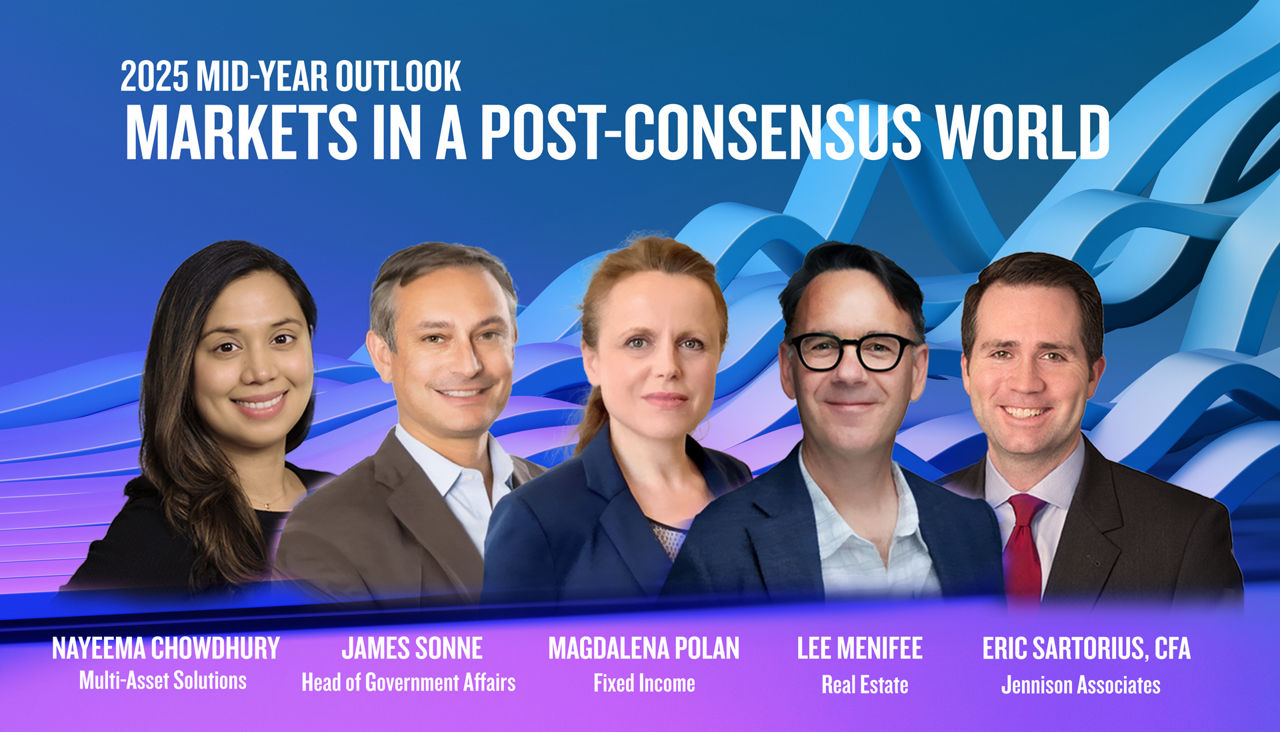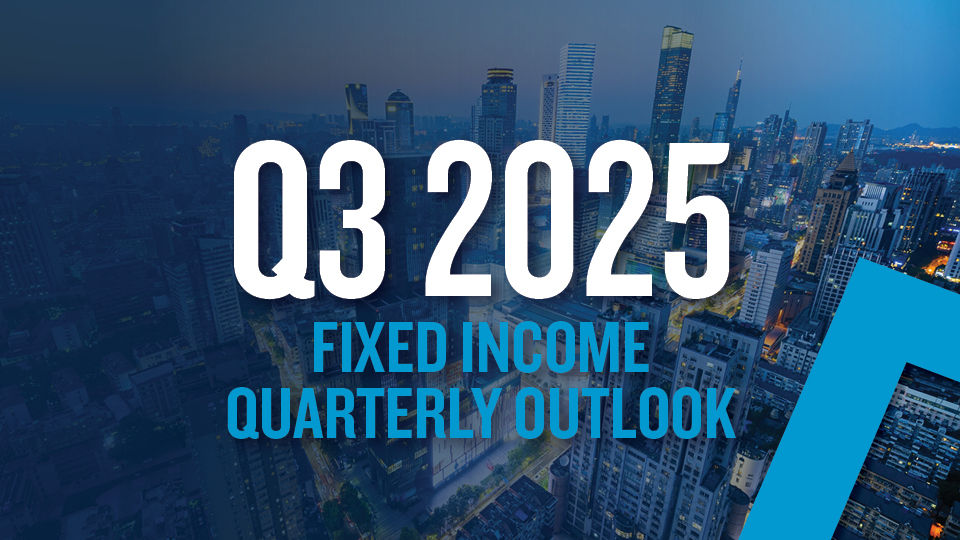Capital markets have entered a regime where traditional signals no longer offer conviction, and consensus views—on inflation, growth, policy, and even risk premia—are diverging rather than converging. Rate expectations shift week to week, inflation data remains volatile, and geopolitical realignment is influencing flows and pricing in ways that defy old models. Markets are now responding to interpretation risk: how policymakers frame data, how central banks communicate uncertainty, and how narratives—not just numbers—are influencing asset class direction.
PGIM gathered a panel of experts to discuss underappreciated macro and market themes, areas where selective conviction is reemerging, and strategies for managing risk amid an ever-changing outlook. The following is a summary of the conversation.
- Underappreciated themes: The technology sector has played a central role in the recent market rally, with growth equities powering major indexes to all-time highs. Amid focus on the Magnificent 7, investors seeking diversification and new opportunities could find that in the short term, there is potential for improved returns beyond large-cap names. Real estate investors have become more selective in their allocations with some sectors outshining others. The potential benefits of diversifying across region and property type will likely be relearned in this cycle, offering support for a wide range of investments going forward. On a macro level, don’t disregard the fundamentals: While tariffs and US policy shifts are key to shaping the outlook for emerging markets, underlying economic trends remain the most important markers. Investors should look beyond the trade landscape and take note of domestic policy, growth prospects, and capital flows.
- Tariffs, taxes and the Fed: Headlines of late might be overlooking President Donald Trump’s strategic use of tariffs to create leverage in negotiations with trade partners. Tariffs have not rattled the economy in the way that some forecasts feared. However, as a favored foreign policy tool, tariff threats could become a constant force driving markets. Now that tax and spending legislation—dubbed the Big Beautiful Bill—has been signed by the president, uncertainty over interest-rate policy and the future of the Federal Reserve’s leadership have taken center stage in Washington. In addition to seeking a Fed chair who is more dovish on rates, President Trump might be looking for a nominee who has a critical eye toward the central bank—particularly its influence on markets—and who would support making fiscal policy a consideration when setting monetary policy.
- Regionalization and EM capital flows: US trade policy has contributed to a weaker dollar in the first half of 2025, which has strengthened EM currencies and influenced global capital flows. With regionalization taking hold, investment flows have been shifting closer to end markets, benefiting the likes of Mexico, eastern Europe and southeast Asia. At the same time, trade tensions with China have dragged on foreign direct investment in EU countries. Because it is exposed to both sides of the US-China trade spat, Europe faces difficult policy choices but also an opportunity to implement fresh ideas that can ignite growth and productivity. Despite trade tensions, inflows into EMs have continued, highlighting the resilience of these markets and the underlying momentum that is independent from US trade policies. Meanwhile, AI offers significant opportunities for productivity improvements in EMs, especially lower income countries, due to the ease of access and removal of the language barrier.
- Real estate opportunities emerging: Mexico has been one of the major beneficiaries from near-shoring trends amid shifting trade policies and the push to diversify supply chains following the pandemic. While it remains unclear where tariff rates will ultimately settle, favorable trends in cross-border trade could fuel meaningful growth for Mexico’s industrial properties, potentially creating a value opportunity for investors. The broad living sector—encompassing properties such as senior housing, student housing and co-living—appears fairly valued relative to interest-rate expectations and could present appealing risk-adjusted returns since it is less correlated to other sectors. Migration to the southern US could create support for multi-family markets despite near-term headwinds from an oversupply of properties. Demand for transitional loans in the sunbelt and elsewhere has been strong. In Europe, urban logistics and open-air hospitality are emerging as opportunities.
- AI pioneers and beyond: There is a significant amount of AI innovation on the horizon. Recent policy moves, including an AI action plan from the White House, will help accelerate innovation that creates new use cases. The rollout of enterprise applications will take time, but demand for services on the periphery of AI—such as data centers, independent power producers, and data governance—creates a broad opportunity set to capture AI-driven growth, not just among the mega-cap pioneers. Companies that can monetize AI, rather than implement AI into their businesses over time, are likely well positioned to thrive.
-
Third Quarter 2025 Market OutlookAs we navigate the third quarter of 2025, investors are faced with a number of challenges: tariff policies reshaping global markets, central bank divergence, and a shift in stock-bond correlation regimes. Against this backdrop, recession probability remains elevated at more than 60%, US fiscal debt is on the rise approaching 130%, and geopolitical tensions continue to fuel market volatility. Despite these challenges, there are potential opportunities that investors may be able to capture. Our Third Quarter 2025 outlook explores five key themes impacting markets and seeks to identify these compelling, actionable opportunities through our assessment of major asset classes.
Read More
-
OutlookDeceleration, Divergence & DiversificationPGIM Fixed Income's Third Quarter 2025 Market Outlook
Read More
-
2025 Real Estate Global OutlookHeightened uncertainty is weighing on the near-term outlook, but it has not derailed the recovery and growth story.
Read More





